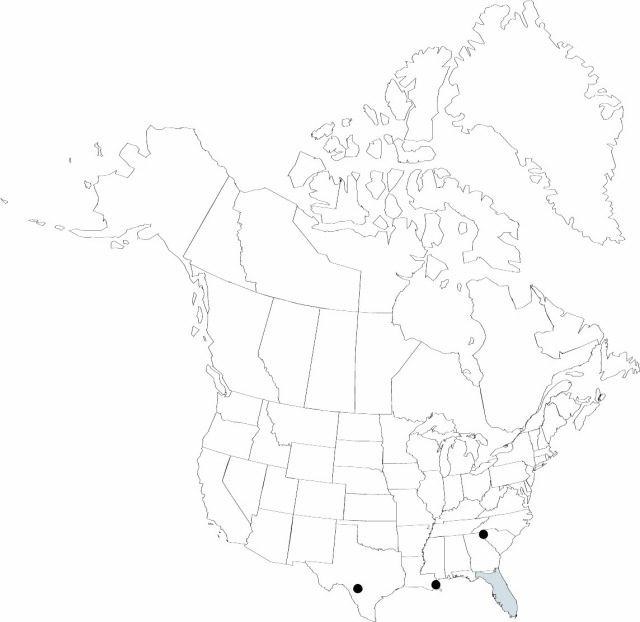Difference between revisions of "Canna indica"
Sp. Pl. 1: 1. 1753.
FNA>Volume Importer |
FNA>Volume Importer |
||
| Line 12: | Line 12: | ||
|name=Canna coccinea | |name=Canna coccinea | ||
|authority=Miller | |authority=Miller | ||
| + | |rank=species | ||
}} {{Treatment/ID/Synonym | }} {{Treatment/ID/Synonym | ||
|name=Canna discolor | |name=Canna discolor | ||
|authority=Lindley | |authority=Lindley | ||
| + | |rank=species | ||
}} {{Treatment/ID/Synonym | }} {{Treatment/ID/Synonym | ||
|name=Canna edulis | |name=Canna edulis | ||
|authority=Ker Gawler | |authority=Ker Gawler | ||
| + | |rank=species | ||
}} {{Treatment/ID/Synonym | }} {{Treatment/ID/Synonym | ||
|name=Canna lutea | |name=Canna lutea | ||
|authority=Miller | |authority=Miller | ||
| + | |rank=species | ||
}} {{Treatment/ID/Synonym | }} {{Treatment/ID/Synonym | ||
|name=Canna warscewiczii | |name=Canna warscewiczii | ||
|authority=Dietrich | |authority=Dietrich | ||
| + | |rank=species | ||
}} | }} | ||
|hierarchy=Cannaceae;Canna;Canna indica | |hierarchy=Cannaceae;Canna;Canna indica | ||
| Line 48: | Line 53: | ||
-->{{#Taxon: | -->{{#Taxon: | ||
name=Canna indica | name=Canna indica | ||
| − | |||
|authority=Linnaeus | |authority=Linnaeus | ||
|rank=species | |rank=species | ||
| Line 64: | Line 68: | ||
|publication year=1753 | |publication year=1753 | ||
|special status= | |special status= | ||
| − | |source xml=https://jpend@bitbucket.org/aafc-mbb/fna-data-curation.git/src/ | + | |source xml=https://jpend@bitbucket.org/aafc-mbb/fna-data-curation.git/src/f50eec43f223ca0e34566be0b046453a0960e173/coarse_grained_fna_xml/V22/V22_345.xml |
|genus=Canna | |genus=Canna | ||
|species=Canna indica | |species=Canna indica | ||
Revision as of 19:57, 16 December 2019
Rhizomes fleshy. Leaves: sheath glabrous; blade narrowly ovate to ovate, 20–60 × 10–30 cm, base obtuse to narrowly cuneate, apex shortly acuminate to acute, abaxially and adaxially glabrous. Inflorescences racemes, sometimes branched, bearing 1- to 2-flowered cincinni, 6–20 per inflorescence; primary bracts to 15 cm; secondary bracts to 9 cm; floral bracts persistent, broadly obovate to narrowly (ob)ovate(-triangular), 0.5–3 × 0.5–1.5 cm, apex entire, often glaucous; bracteoles (ovate-)triangular, 0.5–2 × 0.3–0.8 cm, apex entire. Flowers red to yellow-orange, never pure yellow (except in some hybrid cultivars), 4.5–7.5 cm; pedicels 0.2–1 cm, to 1.5 cm in fruit; sepals narrowly triangular, 0.9–1.7 × 0.2–0.5 cm; petals erect, 4–6.5 cm, tube 0.5–1.5 cm, lobes lanceolate to narrowly oblong, 3.5–5 × 0.4–0.7 cm; staminodes 3–4, narrowly obovate to spatulate, 4.5–7.5 cm, free part 0.3–0.5 cm wide, apex rounded, acute, or cleft; labellum reflexed, narrowly oblong, approximately equal to other staminodes. Capsules ellipsoid to nearly globose, 1.5–3 × 1.5–2 cm. Seeds black, globose to nearly globose, 5–8 × 4–6.7 mm diam. 2n = 18.
Phenology: Flowering primarily spring–summer; fruiting summer–early fall.
Habitat: Often, if not always, in secondary growth and waste places
Elevation: 0–100 m
Distribution

Apparently Fla., La., S.C., Tex.
Discussion
Canna indica is probably native to neotropics and is now common throughout tropics and subtropics.
Selected References
None.